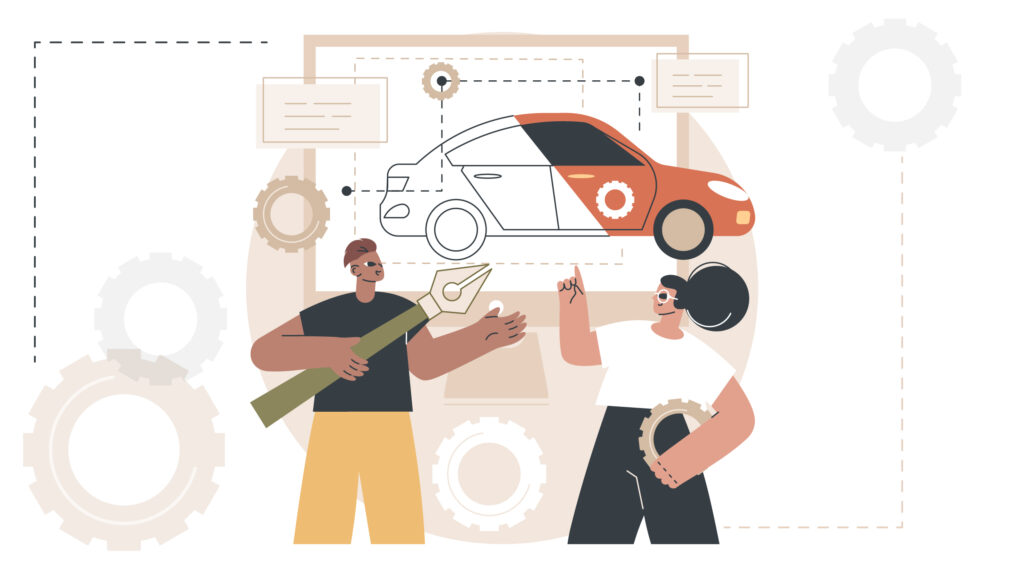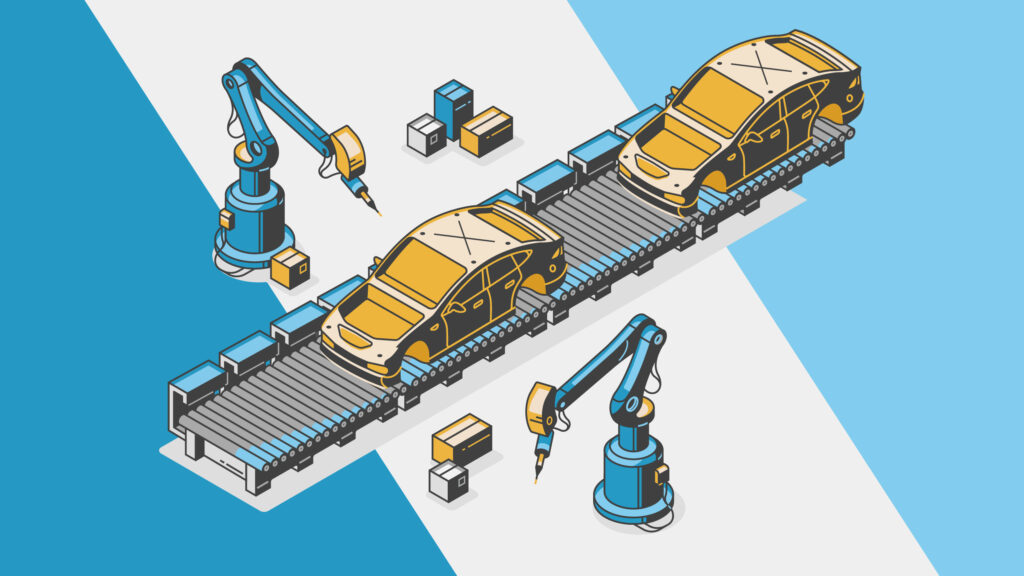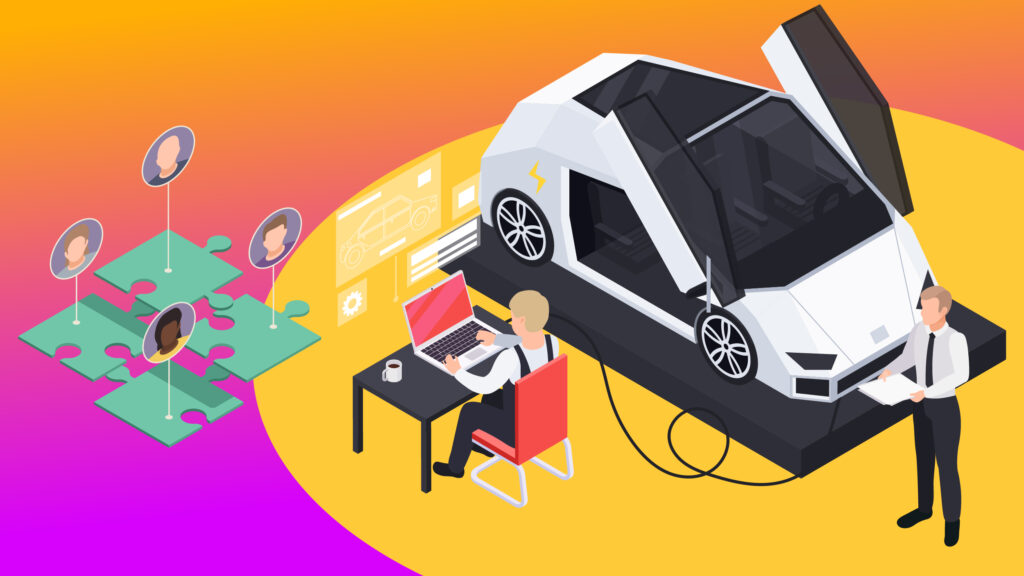The automotive industry is currently emerging from one of its most difficult eras. The process that brought us here has already been extensively discussed, but what about what lies ahead? What will be the prevailing key trends in the automotive industry, and what does the foreseeable future hold for the subsequent stage of its development?
Global automotive sales fell as a result of the Covid-19-related restrictions. However, the industry triumphed as a result of emerging automotive technologies and industry-wide innovation. The sector is implementing numerous new automotive market trends in order to maintain the growing pace, from boosting digital sales and extending the used-car market to stepping up safety-related measures.
Here are ten latest automotive market trends of 2023 that will continue to grow in the upcoming years.
Digital Technology Boosts Electric Car Production
Digital technology is being incorporated into cars by manufacturers in the automotive market. Electric and self-driving automobiles are also being developed by automotive technology companies such as Google and Tesla. It follows that automobiles manufactured in 2023 and beyond will undoubtedly be loaded with equipment to handle digital touchpoints. The creation of software and digital and electronic operating systems to power and control the new, cutting-edge electric vehicles with zero emissions is a highly competitive field. Digital technologies will be present throughout these future cars. Thus, the trend is considered the key automotive market trend in 2023 and in the near future.
Increasing Digital Sales of Automobile
North American and European automakers have begun letting customers choose and buy the vehicles they want online rather than going to the car showroom. Buyers can browse and choose the characteristics they wish in a car and apply for financing at their convenience using a computer or smartphone. Additionally, dealerships now provide online sales, enable virtual walk-around technologies for online buyers, arrange for at-home test drives, and transport vehicles to customers’ homes. In 2023, other automakers will follow suit.

Rising Sales of Pre-Owned Vehicles
Sales of modern automotive used cars are booming right now, which is another potential automotive market trend anticipated to lead the industry. Between 2019 and 2025, used car sales are expected to expand at a 9% annual rate, according to automotive industry analysts. Demand for used cars is growing, especially those four years old or newer. These cars are equipped with several of the most emerging automotive technologies but cost less than brand-new ones. Used electric and hybrid cars are included in this.
These days, dealerships have a plethora of certified pre-owned vehicles in their inventories that perform, feel, and look like new vehicles but are considerably less expensive. Additionally, low APR financing contributes to the high attraction of modern automotive used cars.
Surging Prevalence of Connected Cars
The increasing adoption of connected cars is another significant automotive market trend ruling the market. Vehicles that are wirelessly connected to the Internet of Things (IoT) are known as connected cars. These cars use on-demand capabilities that let you access the internet whenever you want while driving, giving you a safe, comfortable, and convenient multimedia experience. Bidirectional communication between connected cars and numerous other systems outside of their local network is possible.
Vehicles can communicate with devices inside and outside of them via the internet. In addition to accessing 4G LTE Wi-Fi Hotspots, providing digital data and remote diagnostics, vehicle health reports, data-only telematics, sending and receiving turn-by-turn instructions, and actively intervening to prevent breakdowns, today’s connected cars can also send and receive data.
Newer and More Creative Online Marketing Techniques
To sell cars, plan visits, and arrange test drives, car dealers in China employ third-party e-commerce platforms, making it another substantial automotive market trend influencing the industry. Influencers on social media will play a crucial role in influencing consumer behavior and creating interest in the new cars that will be available starting in 2023.
Roadster, G Forces, Digital Motors, Sophus3, and CitNow are just a few examples of emerging technologies in the automotive industry enablers that drive the automotive ecosystem and engage customers online with eye-catching graphics, fascinating presentations, and persuasive sales messages. Automobile consumers can anticipate considerably more of it in 2023.

Development of Fuel Cell Electric Vehicles
Global adoption of fuel-cell electric vehicles is anticipated to begin in 2023. People are increasingly adopting fuel cell electric vehicles at an increasing rate since they recharge more quickly, have a range that can be up to five times greater than other electric vehicles, and only release water when they run. The development of fuel-cell electric vehicles is a priority for many auto, truck, and SUV manufacturers. Germany, China, Japan, South Korea, and the United States are all in favor of fuel-cell electric vehicles.
Combined Mobility
Another automotive market trend ruling the industry is shared mobility. It is basically an alternative to traditional vehicle ownership, a new business model which is gaining popularity. When using shared mobility, two or more persons have temporary access to the same car. Similar to Uber or using a personal rental, it is mobility as a service. Recent years have seen a significant increase in the popularity of this demand-driven vehicle-sharing system. Every day, new businesses that provide shared mobility choices emerge, giving an innovative, economical, and practical alternative to the high prices and numerous responsibilities of vehicle ownership.
Self-Driving Autonomous Vehicles
Autonomous self-driving cars will be more prevalent by 2023 and beyond. According to research, autonomous vehicles enhance fuel efficiency by 10%, increase safety, decrease downtime, increase the scope of last-mile deliveries, decrease driver fatigue and negligence-related accidents, and cut CO2 emissions by 42 million metric tonnes yearly. Several trucking businesses have installed and tested self-driving technology around the nation. By 2023, it will be commonplace to pass a self-driving Tesla or a fleet of autonomous self-driving commercial trucks in the lane next to you.
Truck Platooning
Truck platooning is one another automotive market trends that you will see more of in 2023. This occurs when many trucks use vehicle-to-vehicle connections to follow each other closely while moving quickly. Truck platooning will become increasingly prevalent in 2023 and beyond as studies have shown that doing so significantly increases the fuel efficiency of the trucks. When used in conjunction with autonomous freight transportation, truck platooning functions best. As the number of self-driving autonomous trucks on the road rises, truck platooning is expected to gain popularity over the years.
Collaborations Between Automakers and Technology Companies
It is not surprising to see partnerships between automakers and technology firms given the speed with which new technological developments are being incorporated into cars and other vehicles. In order to operate effectively and securely, electric, networked, and autonomous vehicles need specialized software.
The manufacturers of cars, trucks, and SUVs must either invest heavily in their technological capabilities or form an alliance with organizations that can create the new operating systems that the upcoming generation of technologically advanced vehicles will require. More alliances between automakers and tech firms will emerge in 2023.

Roadworks Ahead
Although the future of mobility appears promising with the aforementioned automotive market trends of 2023 will rule the industry, there will be difficulties. Manufacturers will need to simultaneously develop for the future while also adopting emerging technologies in the automotive industry and responding to current issues, as the industry’s sustained resilience will be crucial.
The industry will have challenges in fully using the momentum and continuing to serve its customers and consumers given the pace of technological advancements. In a sector that is continuously reinventing itself and looking ahead to exciting and possibly more purpose-driven times, we are witnessing history repeat itself once more.




